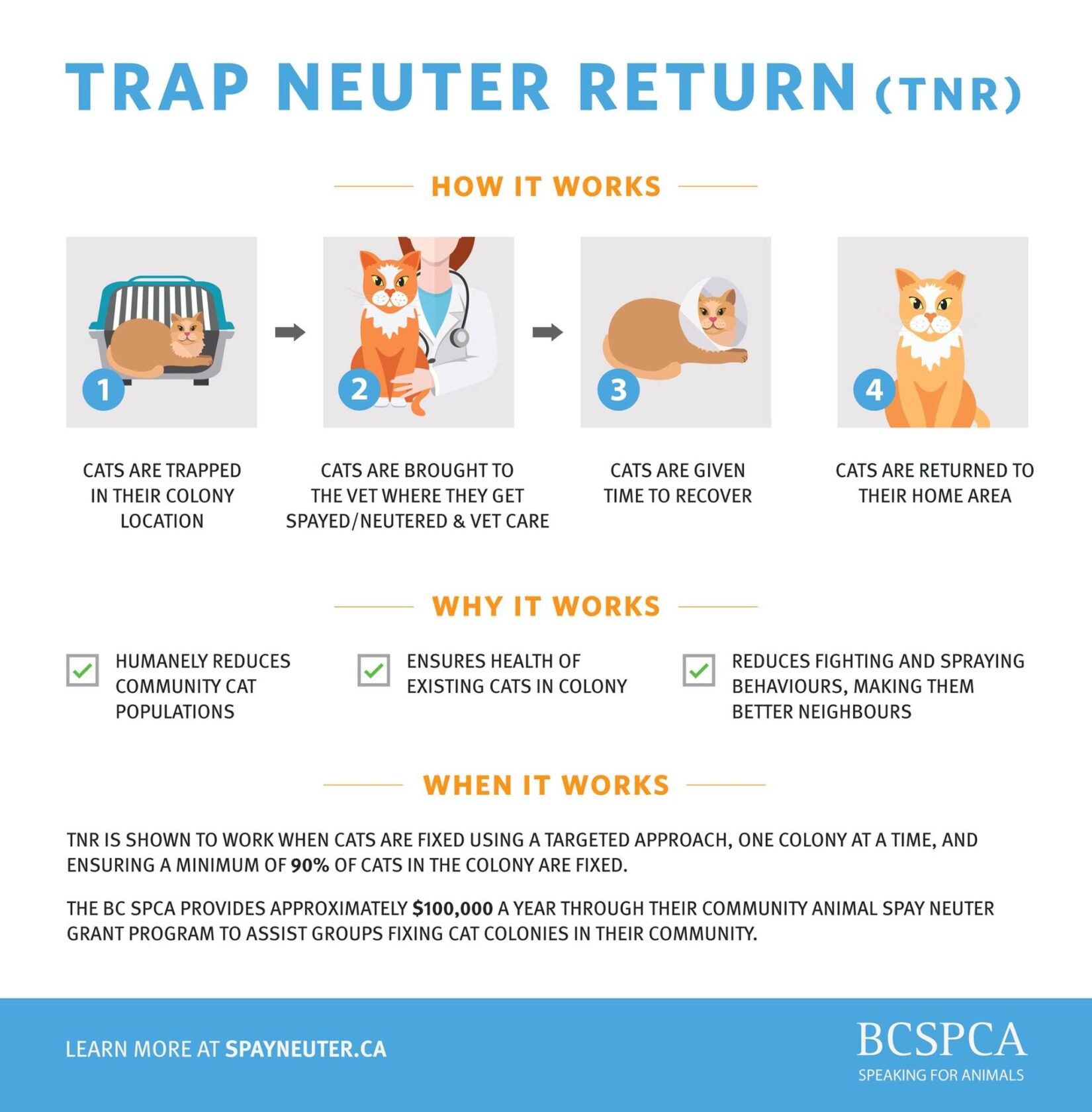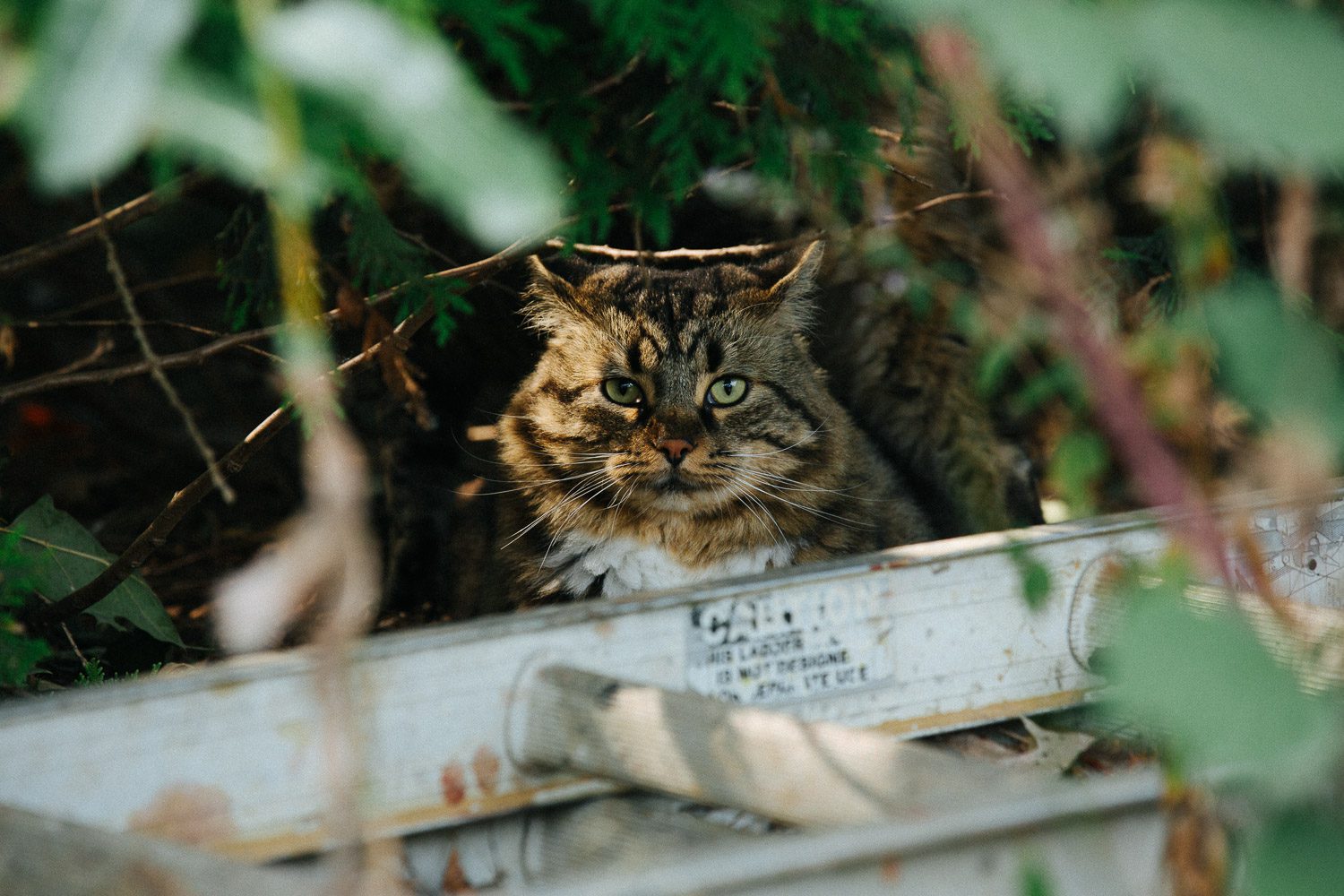Have you lost or found an animal? Search our help topics for what to do next.
If you have cats in your community who appear to be living on their own outdoors, there are a few things you can do to help, especially during the winter months.
Get the cat spayed or neutered: The best method of getting feral cat populations under control is through trap-neuter-return (TNR). This involves trapping the cats, getting them spayed or neutered and vaccinated, and then returning them back to their environment. In addition to humanely reducing the population, TNR also improves the health of the cats and makes them better neighbours.
Contact your local SPCA or cat rescue for advice on how to humanely and safely trap a feral cat. They may even have a trap loan or TNR program to assist you. Community programs are available to help spay and neuter cats to help fight the cat overpopulation problem in B.C.

Ensure access to food and water: Food should be left out for cats only during feeding time and then removed to ensure it doesn’t attract wildlife such as raccoons, skunks or bears.
Water should be available at all times. In winter, water sources and wet food can easily freeze over. When you put out water for cats, check it twice daily to make sure it stays ice-free. During the winter, choose dry kibble and ceramic or plastic dishes.
Check your local bylaws: There may be provisions in your municipal bylaw that require you to register the cat colony, or ensure that all cats have permanent identification such as a tattoo or microchip.
Build an outdoor cat shelter: Wintertime is especially hazardous for feral cats. They can struggle through the coldest months of the year to find enough food, water and shelter. Their ears and toes can easily get frostbitten if they don’t have access to a winter shelter.
By providing a cat shelter, cats will be able to escape the wind, snow and rain and make it safely through the cold winter months. Our instructional video walks you through it step by step.
Tap your car: Keep in mind that in the winter months, outdoor cats (and wildlife) may see your car as a warm refuge. Before starting your vehicle, ‘think and thump’ – tap the hood and check between the tires to make sure no cats are hiding underneath or camping out in the engine compartment.

Spay or neuter your own pet: Female cats have a quick reproductive cycle, and cat populations can boom in a very short amount of time. The first step is always to ensure your own pets are spayed and neutered. In addition, we recommend keeping your cat indoors – not only for their own safety, but also to prevent them from catching and spreading diseases or getting lost and ending up part of a feral colony. We have a lot of great tips for how to keep your indoor cat happy and healthy.
Learn more about

